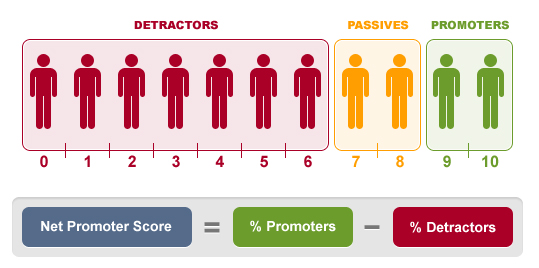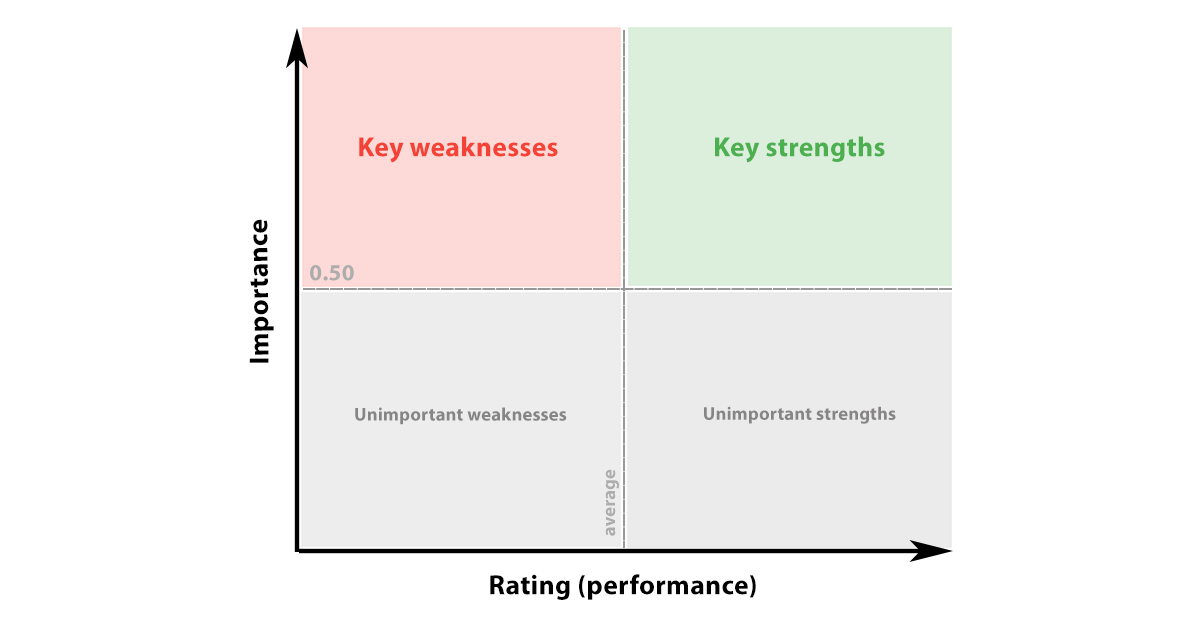In our previous article we focused on reducing detractors, which increases your NPS the fastest. This week we take on a more difficult task of trying to turn your passives into promoters. We will have to warn you, this is more difficult.
Because passives aren’t included in the NPS calculation, most organizations ignore this group of people. Turning a 7 or an 8 into a 9 or 10 is very difficult. You will quickly realize that even completely satisfied customers might “only” give you an 8 out of 10 on the Net Promoter Score question.
Nevertheless, passives are often the largest group, and since they already know your brand or use your product, spending some extra time on this group of customers will increase growth.
Let’s start from the beginning. What is the NPS?
The Net Promoter ScoreSM (NPS®) is a metric to measure customer satisfaction. It’s an indication of the growth potential of your company or product and it is used by many companies because it is very easy to measure.
The Net Promoter Score is calculated based on the score people gave on one question:
“How likely are you to recommend company/brand/product X to a friend/colleague/relative?”.
This score divides people into three categories:
- Detractors: people who gave a score from 0 to 6
- Passives: people who gave a score of 7 or 8
- Promoters: people who gave a score of 9 or 10
Last week, we discussed how to turn detractors into promoters, so this time we will focus on passives. Passives are people that gave a score of 7 or 8 on the Net Promoter Score. If you have no idea what we are talking about, you can read everything about it in our Net Promoter Score article.
Who are passives?
Passives are often classified as people that are neutral. They don’t really recommend your product or service to anyone, but they are also not particularly dissatisfied. They most of the time buy out of habit and they are likely to leave your company from the moment they get a better offer. This group of people can be easily persuaded by competitors so how can you make sure you can turn them into promoters before your competitors do?
Turn passives into promoters
Customer experience is becoming more important than price and this is also the case for your passives. Passives are looking to be impressed. This doesn’t mean you have to go crazy and spend a lot of money. Maybe your passives don’t know yet what makes your brand different? With an NPS survey you can easily find out what your promoters are most enthusiastic about. Start asking yourself, is this something everyone already knows? Can you specifically advertise this to your passives? You might already have everything in place to create a large group of promoters but some customers are just not aware yet.
Another method to impress your passives is by overdelivering. One of the easiest ways to impress your customers is going the extra mile. Always try to overdeliver. Offering a small, unexpected gift is considered one of the most impactful methods to show your customers you value them.
Today’s consumers do not buy just products or services — more and more, their purchase decisions revolve around buying into an idea and an experience.
Even though we’ve just mentioned the importance of customer experience over price. For a passive, price still plays an important role. Because passives are not overly enthusiastic about your product, service or brand, they probably do not see a lot of differences between you and your competitors. This makes them an easy target for discounts. Keep an eye out for your competitors and their pricing to make sure you can anticipate if needed. Sometimes a small discount already does the trick.
Listen to your promoters
This may sound counterintuitive, but to turn your passives into promoters, it will actually be very useful to find out what your promoters are saying. To get useful feedback from this group, word your open question carefully… ask very specifically in your Net Promoter Score survey if they had to choose one reason why they are so satisfied, what would it be. With a key driver analysis, you will be able to identify which aspects of your service or product influence how likely a customer will be to recommend you to others.
Once you know what experiences are leading promoters to be so satisfied, put effort into replicating these experiences with more customers which will lead to more promoters and more growth.
Another positive aspect of this approach is that employees often experience NPS programs as something negative, since most of the information that drips down to them are issues that detractors are having. By also focusing on the positive points brought up by promoters, you can set up a positive feedback loop among employees and improve their view of your NPS program.
Additionally, passives can provide you with excellent feedback on what you can improve as well. This can range from a feature they would like to see or how your customer support handled a specific email. Identify the common keywords that are used by your passives in your NPS survey using text analysis and auto-tagging and create a solution.
Asking regularly what you customers think is the first step, but it is not enough. Show your customers that you are acting upon their feedback and make the necessary improvements. You have to let them know that you care and they will start caring about your brand as well.
Net Promoter and NPS are registered service marks, and Net Promoter Score and Net Promoter System are service marks, of Bain & Company, Inc., Satmetrix Systems, Inc. and Fred Reichheld




Leave a Reply